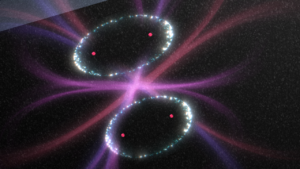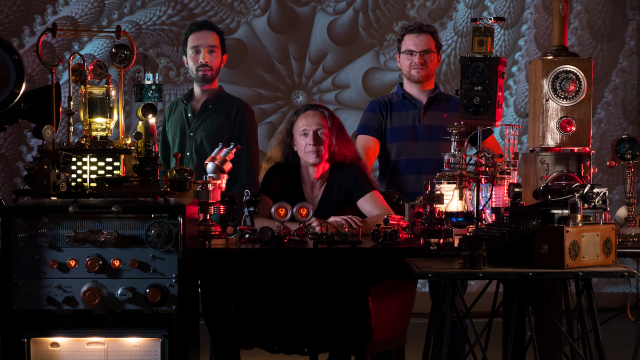A team of researchers from UNSW in Sydney have just smashed an incredible quantum computing barrier. They’ve created a silicon-based device with better than 99 per cent accuracy.
OK that sounds great, but what does this mean?
Well, this breakthrough will enable the manufacture of quantum chips that don’t trip over their own errors, those that are also compatible with today’s silicon chip factories.
Basically, the UNSW research paves the way for large silicon-based quantum processors for real-world manufacturing and application.
As detailed in the scientific publication Nature, the researchers from UNSW, with partners in the U.S., Japan, Egypt, UTS and the University of Melbourne, have proven that near error-free quantum computing is possible, paving the way to build silicon-based quantum devices compatible with current semiconductor manufacturing technology.
According to UNSW Professor Andrea Morello, when the errors are so rare, it becomes possible to detect them and correct them when they occur.
“This shows that it is possible to build quantum computers that have enough scale, and enough power, to handle meaningful computation,” he said. “This piece of research is an important milestone on the journey that will get us there.”
What the work means is that robust, reliable quantum computing in silicon is now a reality, rather than a dream UNSW hoped would work.
The science behind this quantum breakthrough
The team achieved 1-qubit operation fidelities up to 99.95 per cent, and 2-qubit fidelity of 99.37 per cent with a three-qubit system comprising an electron and two phosphorous atoms, introduced in silicon via ion implantation.
At the same time, a team in the Netherlands led by Lieven Vandersypen (known as Delft) achieved 99.87 per cent 1-qubit and 99.65 per cent 2-qubit fidelities using electron spins in quantum dots formed in a stack of silicon and silicon-germanium alloy (Si/SiGe). And a team from RIKEN in Japan led by Seigo Tarucha similarly achieved 99.84 per cent 1-qubit and 99.51 per cent 2-qubit fidelities in a two-electron system using Si/SiGe quantum dots.
UNSW said its team, alongside the work from Delft, certified the performance of their quantum processors using a sophisticated method called gate set tomography.

Morello had previously demonstrated that he could preserve quantum information in silicon for 35 seconds, due to the extreme isolation of nuclear spins from their environment.
“In the quantum world, 35 seconds is an eternity,” he said. “To give a comparison, in the famous Google and IBM superconducting quantum computers the lifetime is about a hundred microseconds – nearly a million times shorter.”
But the trade-off was that isolating the qubits made it seemingly impossible for them to interact with each other, as necessary to perform actual computations. However, the breakthrough lies here: the team overcame this problem by using an electron encompassing two nuclei of phosphorus atoms.
“If you have two nuclei that are connected to the same electron, you can make them do a quantum operation,” explained Dr Mateusz Mądzik, one of the lead experimental authors.
“While you don’t operate the electron, those nuclei safely store their quantum information. But now you have the option of making them talk to each other via the electron, to realise universal quantum operations that can be adapted to any computational problem.”
As another lead experimental author, Dr Serwan Asaad, explains: “This really is an unlocking technology”.
“The nuclear spins are the core quantum processor. If you entangle them with the electron, then the electron can then be moved to another place and entangled with other qubit nuclei further afield, opening the way to making large arrays of qubits capable of robust and useful computations,” Asaad added.
The phosphorous atoms were introduced in the silicon chip using ion implantation, the same method used in all existing silicon computer chips. According to David Jamieson from the University of Melbourne, this ensures that the team’s quantum breakthrough is compatible with the broader semiconductor industry.
All existing computers deploy some form of error correction and data redundancy, but the laws of quantum physics pose severe restrictions on how the correction takes place in a quantum computer.
You typically need error rates below 1 per cent, to apply quantum error correction protocols.
Having now achieved this goal, the team can start designing silicon quantum processors that scale up and operate reliably for useful calculations.
This great work smashing quantum barriers follows a team from the University of Adelaide earlier this week announcing they have proven the concept of super absorption, a breakthrough in creating quantum battery technology.
